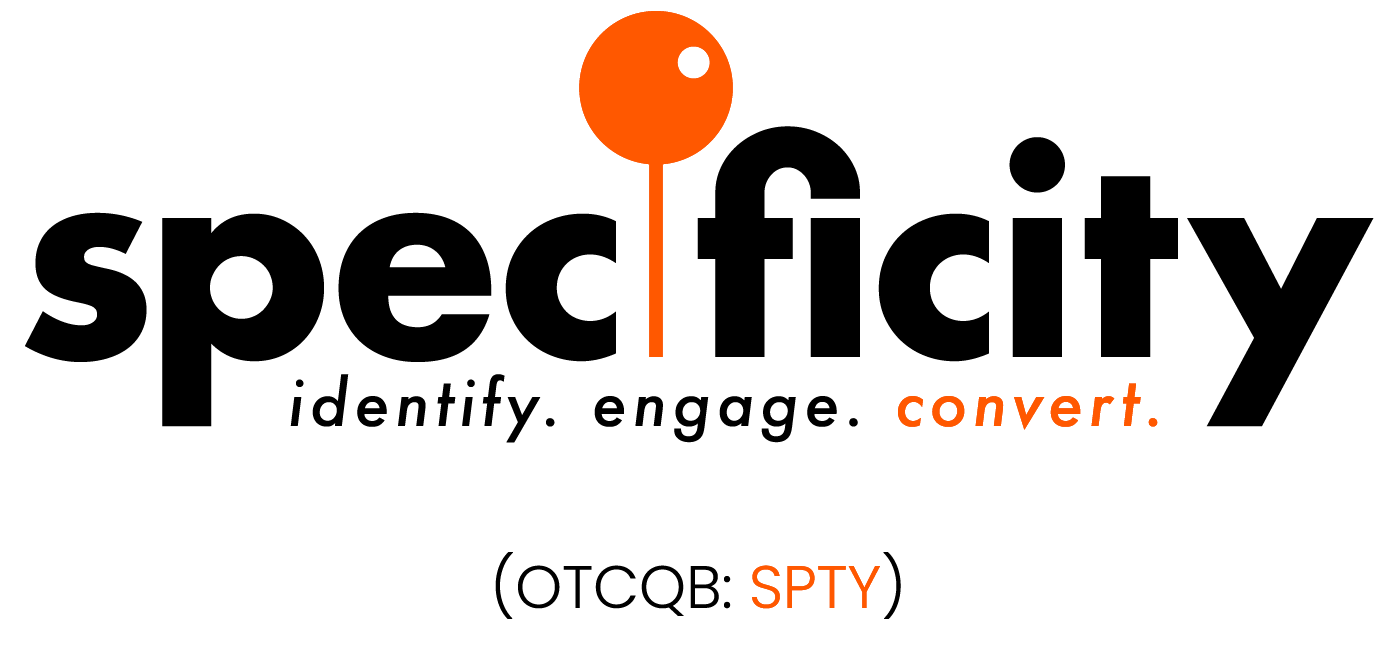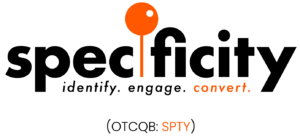With Absolute Specificity #7 – Brittany Crawford And Mitch Frisbie
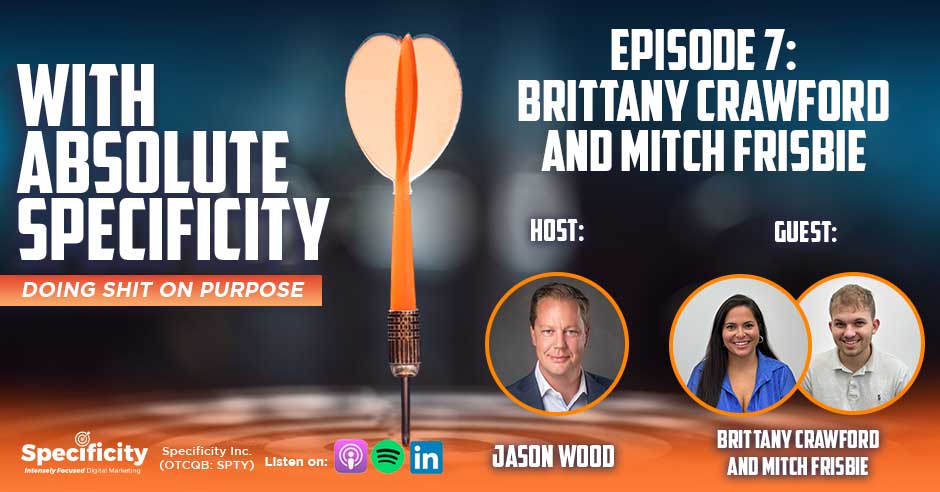
At Specificity, they use AdTech Platforms but do not use them to build audiences. Here’s why! Brittany Crawford and Mitch Frisbie share how Specificity helps clients build their audience and increase conversion from those audiences. They also talk about ad spend and why you should strategically target your audience. Brittany and Mitch added how you could move to the highest conversion audience. Tune in to this episode for more!
—
Watch the episode here
Listen to the podcast here
With Absolute Specificity #7 – Brittany Crawford And Mitch Frisbie
Welcome to another episode. We are doing shit on purpose. I got a couple of special guests. I should have done this in the beginning and I didn’t do it. I brought on our director of client success, Brittany Crawford, and our director of digital strategy, Mitch Frisbie. I’m going to tell you a little bit about both of these guys.
Brittany has been with the company for several years. She’s been through a couple of different technology iterations. That’s a polite way to say she’s sick of my shit. Brittany has got some great insights on different perspectives. Mitch has been with the company for a couple of years. He came on board with the new technology. Mitch is 23 years old and already the director of this department because this guy’s got data insights that are dope. You guys are going to get a feel for that as we move forward.
The reason I brought them on is I want to hash out some topical stuff here. The primary thing I want to talk about is ad tech. We are getting a lot of questions about this. Ad tech, we define it at Specificity as any ad-serving platform that uses a backend software apparatus for targeting. Think of Facebook’s backend where you go in and say, “I want people of this age, this location, and that type of stuff.” Think of Simplify, LiveRamp, and others.
When marketers go in and build out the audience and then the ad tech platform serves the ads based on the cadence, frequency, and everything else the marketer sets up, the difference between what they do and what we do is dramatically different. We are going to share a real anecdote with you. They force marketers to build audiences inside that ecosystem so that they can arrive at what we call in our biz addressable audiences. We can go into the data and create an audience we want, but can we make it addressable? Meaning, can we get the data points and everything needed to make it a mechanically sound audience that can have ads served to it through these ad tech platforms?
I want to make it clear. We use ad tech. We don’t do the audience build-out in their platform because their goal, inherent in their business model, is to create targeting selects that can be used by a very wide swath of people. Their targeting software has to be usable to tens of thousands of marketers all with different agendas and all with different audiences. They don’t get into the granular level of detail. They don’t even try to. Frankly, with the volatility in the data market because of iOS updates and some new regulations, they can’t. That’s where we want to want to hash out here.
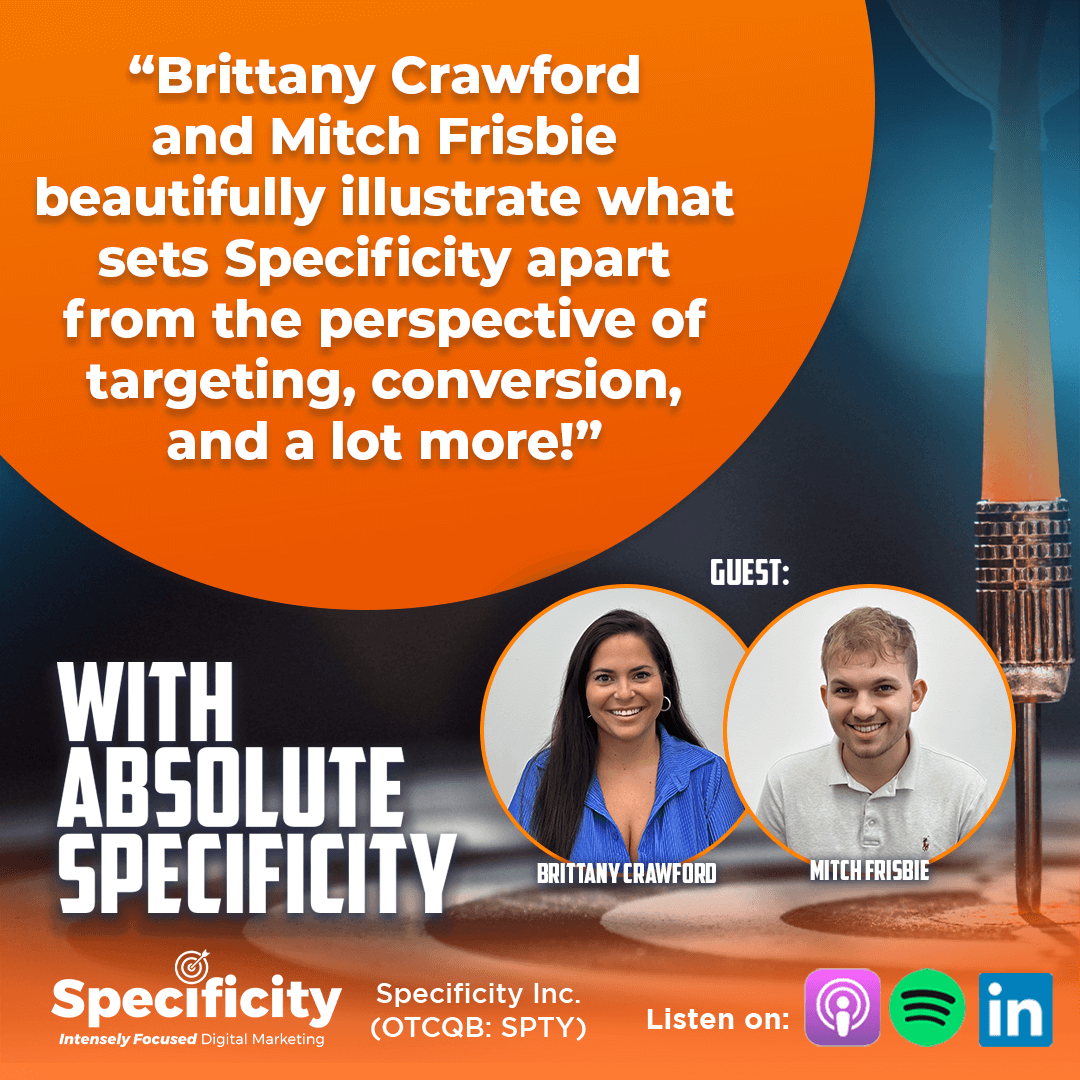
What we do at Specificity, and I’m going to turn this over to Brit for her piece and then we will bounce it to mix for his, is we build these audiences outside of ad tech ecosystems. We know for a fact, for example, that Facebook had to delete hundreds of thousands of targeting and selects from their platform post-iOS. If you are a marketer using any one of those, guess what’s not included in your audience build-out? It is any one of those hundreds of thousands of selects. We maintain the ability through relationships, APIs, and technology to still arrive at addressable audiences while still harnessing all the granular details.
We had a client or a prospect that we are confident we are going to sign give us such an opportunity to do this. I wanted to test what we do and how we do it with ad tech because we were using ad tech versus what we do through Mitch’s team. I tasked these two. I was like, “Brit, go through our normal channels through ad tech and through the platforms we use and build out the most granular detailed audience you can. Mitch, you do the same.” I set them both on that course.
Brittany came back a day and a half later because that’s when she got the data back from the ad tech platform with an audience. Two hours later, Mitch came back with a very different audience. Let’s share that. Brit, share your experience with the ad tech platform we are using, what you were able to arrive at through that process, and what that looks like.
The core of what we do here at Specificity is getting in front of the people that are going to be your most likely conversion. We are narrowing that audience so that we are only getting in front of those people that make sense and not wasting any spend. We may have success with the audiences delivered from the ad platform, but they are still way too wide for what we do. We get granular. Mitch’s team does an insane amount of research to look at behaviors and what these people look like so that we can dial it in. With ad tech, the audiences are way too wide. We are wasting way too much spend. With our clients, we have to have their interests in mind. We are here to make them money, not waste their ad spend.
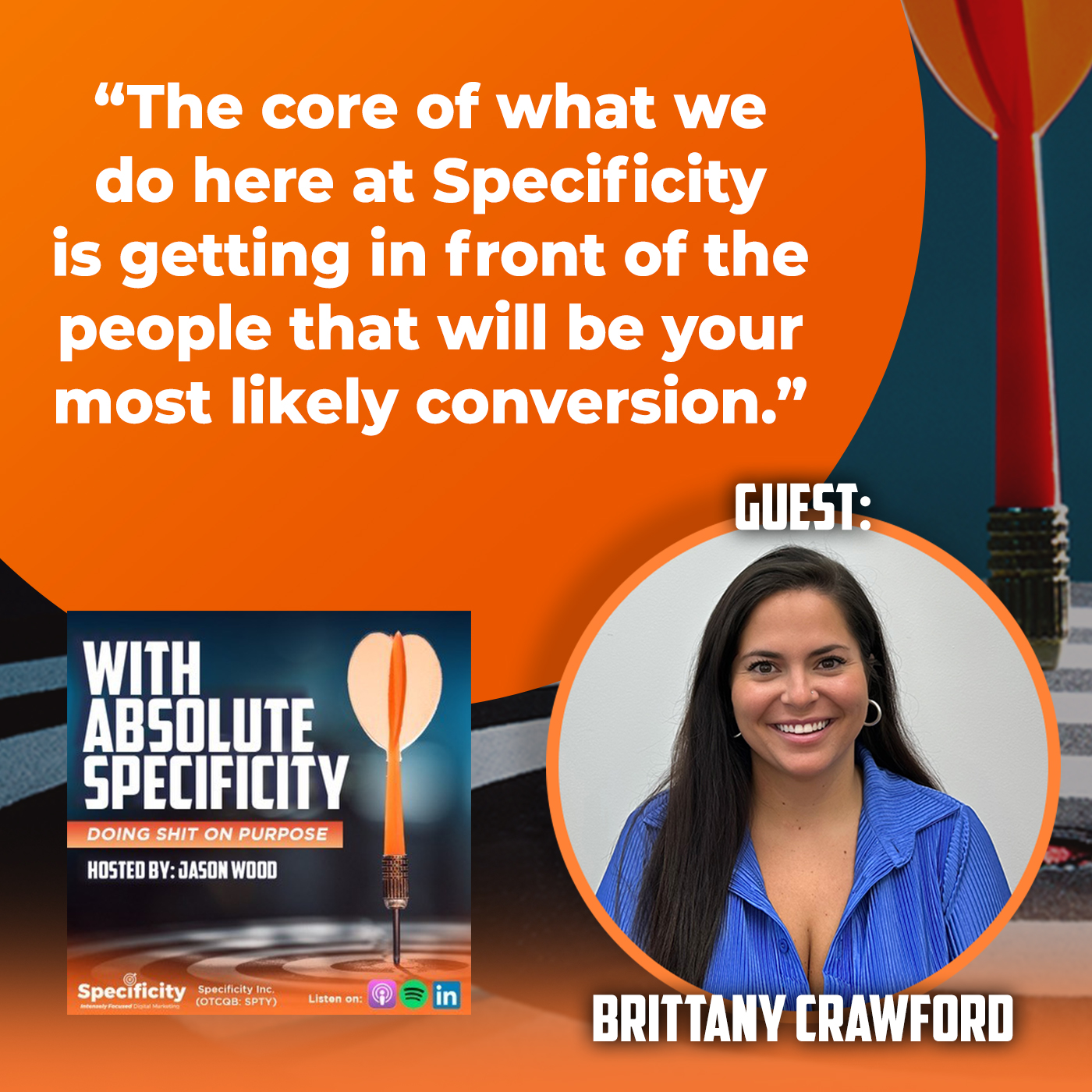
Mitch, we will get into the detail here of what we are talking about in a second. What we are telling clients what we are illuminating and providing the clients is not just an audience that can convert, but it’s the lack of wasted spend in audiences in bigger nets to get at that audience. To be clear, ad tech has some overlap. They can hit some of the audience we can hit, too. What they can’t do is only hit that audience and stop wasting all that fucking money marketing to people that don’t make any damn sense for the business. That’s what we are talking about, right?
In this example, Brittany set out to go find the best selects we could arrive at for a particular client. Mitch was able to not only do it exponentially faster but got right at it. I’m going to share an example. Before we hopped on this. I said I wasn’t going to, but they are going to let us. The client is Mucho. They have a customer loyalty app with a smart model. They went and built out all the relationships with all of the retailers, whether it was a big box, local business, or everybody, for the retail program with the understanding that they would then go out and build the consumer audience.
Most of these apps go after the consumer audience first. It’s a difficult play because they don’t have all the opportunity to save money with these loyalty programs out of the gate. It’s a slower process. These guys are well-capitalized. They built it right, but what they wanted to identify was the high-frequency spender with a little higher elevated spend level in certain retail locations.
We picked a market. We picked grocery stores. That’s an audience of people that spend $100, $200, or $300 every single week and also spend in another one of their swath of retailers as well. It’s a dual-prong thing. Brittany, share with the audience what you were able to get through that process with ad tech selects. Mitch, right after that, share with our audience what you were able to do and I might add quite a bit faster.
It was very generic. People that visit those stores, we couldn’t see how often they visit those stores, what their income level looks like, and what they are spending. There’s a difference between the people that are going to use the saving apps and the people that aren’t. Targeting the people at those stores doesn’t make sense. They tried getting a little more granular by adding child presence since we know they are going to be spending more money at the grocery store, but that still was not narrow enough for us.
Mitch, what’d you come up with?
To add to what Brit was going over, one thing that almost aggravated me a little bit was a select that they threw in. It was an interest in cooking and food, which doesn’t necessarily mean you are spending any amount of money at a grocery store. We were able to pull all the foot traffic from these given retailers and then layer selects indicating that they are the highest frequency spenders at those locations. We were also looking at some of the household composition being the head of household, specifically female, with a number of kids in the household. Meaning, she’s frequently going to those either Giant Eagles or Target and spending money on herself and her family.
Let me pause for our audience right here. This is English to you and Spanish to a lot of people. What Mitch is saying is what we do that everybody else did is identify people that go to the freaking grocery store. That’s the best geo-located audience you are going to get. What Mitch is saying is we leverage contextual data layerings and take that big audience. That’s everybody who went to a particular grocery store in a particular market with multiple locations. That’s the audience that Brittany was able to arrive at with ad tech. That’s the audience Mitch is starting with.
From there, we layered selects of frequency of visit, and then we layered a select of spend level. Think about this as an application in your own business, everyone. If you are going after an ad spend, you are not going to capitalize on everybody. That spend would be enormous. Whom do you want to focus on that ad spend? With what Mitch said, we are going to keep going here because it gets even more refined. We have already said we are going to take the swath of this audience that frequents it every week and eliminate from that audience everybody not spending a profitable amount of money to make the ad spend worth our client’s time.
[bctt tweet=”If you’re going after an ad spend, you won’t capitalize on everybody.” via=”no”]
If you are not spending X amount of bucks per transaction, the cost per acquisition rises above the revenue for the client. That’s a bad audience. Other companies are going, “Look at all the conversions.” They don’t understand those conversions are costing money. I’m sorry to interrupt, but you speak this language so well. I want to make sure everybody reading understands the application here. Keep going.
Thank you for making me cut back because I am speaking another language and I start going off on a tangent. To dig deeper into that audience, we were starting to look at selects indicating that these shoppers have either rewards programs or even coupon apps on their phone indicating that they are that coupon shoppers that is already at a higher likelihood to sign up for a rewards program like this. We already know this audience is spending X amount of money. They are coupon shoppers and they are coming into these locations with frequency.
What you arrived at mentally, and this is the human component at Specificity that you won’t get anywhere else, is that you and your team sat back and went, “Somebody that pulled into the grocery store still had the need to go to the grocery store in a $300,000 car making $10 million a year.” Are they worried about the $8.12 they are going to save?” Probably not so much.
The better way to arrive at even a subtext for that audience is to understand who cares about saving this amount of money. That’s the couponer, the people that are using other rewards programs. They are the people that have the technology adoption component, which is what that leads to. If you are using other apps, you have got the amenability of using discount apps. That even further narrowly defines the highly likely conversion. That’s the element of the second location that we were able to do.
I was silencing the phone. Did you say the second location? As in Target?
Yeah, exactly.
I’m sorry. What was the exact question? How’d you phrase it?
Don’t worry about it. In this audience we built, we also arrived at an audience that also frequents Target. Mitch, start from right here. Answer the question from right here as I asked. Go ahead.
I’m sorry. Could you ask the question again?
Okay. With all of that said, we have already layered out an audience that has got such a higher likelihood to convert, but we had another element to this. This particular client, if they could have it, would be a great opportunity. Those are people that are also visiting another specific retailer where they can save money to even further penetrate that audience. Let’s talk about what we did there.
We looked at the audience that we were talking about. Also, from that, who’s going to Target in the area?
They can use this app at both locations for Giant Eagle or Target.
Back up. We got to that audience, and that is a hell of a lot better conversion audience. Another thing that we knew would benefit the client and the client knew would benefit them if it was possible was taking this audience and people going into a specific grocery store spending a certain amount of money with frequency and technology adopters that use other discount apps and rewards programs.
Nobody else can arrive at that audience, but we added some more to it because they have other retailers. In this particular case, the client wants, “Can we do Target?” We were like, “Yeah.” This is what that does. This not only aggregates an audience that’s doing both, but it provides conversion opportunities for both audiences. If you don’t get them the week they are going to the grocery store earlier in that week but you can get them going to Target, it’s still the same download. The messaging shifts to the frequency of use of the app. That’s a lot less expensive campaign. That can be done with cookie-based stuff and all kinds of other things that are a lot less expensive than conquest marketing.
Mitch’s team went out and said, “We have got this great audience.” That’s always the word with us. What else can we figure out? They go to Target. We can take the chunk of that audience that goes here and drive ancillary additional conversions with a marketing budget that would have otherwise been siloed out specifically for that audience.
We have already talked to them about saving money at Giant Eagle, which is the grocery store in the market we are talking about. We were saying, “Remember when we were talking about Giant Eagle? You missed that opportunity. You are in Target. Here’s another opportunity,” or, “You are going to Target in the next week. Here’s another opportunity.” We layered all those other things. How often do they go to Target? When they go to Target, are they spending the right amount of money? Even the ancillary audience had contextual data layering to make sure it was the right audience.
Let’s back this up and look at what we have accomplished here. We have taken a marketing campaign that’s a mass consumer product in most companies’ eyes. In most marketers’ eyes, they want people that are demographically situated to be amenable to the messaging of getting a discount or saving money. That’s so surface-level. You are wasting 75% of your ad spend.
If you have people that aren’t technology adopters, app users, and all of those things and they are not spending enough money per transaction to make it a profitable conversion, the hell is the point of that? Brit, when you are talking to this client, and I know we have a call with them, these are the kinds of things that they give a shit about, right?
Absolutely. What’s best about our team that you don’t get with building the audiences in an ad tech platform is what our strategy team does to understand the audience we are going after. That’s so valuable to the client.
A great way to summarize this for the layman out there or for the digital marketer that maybe hasn’t ventured into the emerging tech data space that we are in is to explain it this way. If you could take the ideal audience you are capable of building and start adding the word and, so it’s this audience and this is present with them, and you are far less limited in how many and specifically what and you can add, what does that audience look like? That’s what we do for clients in Specificity. This is how we divide it up.
You have got Brittany who understands the application inside the client’s campaign and how to analytically assess it and interpret the data that Mitch’s team is going to go harvest. They are going to harvest it by setting up the campaign. On day one, we are exponentially smarter and more targeted than anybody else out there that’s not even close. When we say our campaigns get smarter, they already start smarter. That’s what we are talking about.
[bctt tweet=”At Specificity, we are exponentially smarter and more targeted than anybody else out there from Day 1.” via=”no”]
The retention for Specificity is high because our clients aren’t delivered analytics on shit that doesn’t matter like clicks. Who gives a fuck if I drive you ten million clicks if nobody converts? Who cares if I drive you a million conversions if they are not profitable? Mitch, talk about the analytics and the type of things we pay attention to. Brittany, chime in where you want on the things you are interpreting from those analytics.
Analytic-wise on this campaign, we are going to be looking at the app downloads. We are going to be able to segment out these different types of audiences within this larger audience and say, “This smaller segment is converting at this rate.” We can take that information and layer it over the rest of the campaign, making it smarter all around.
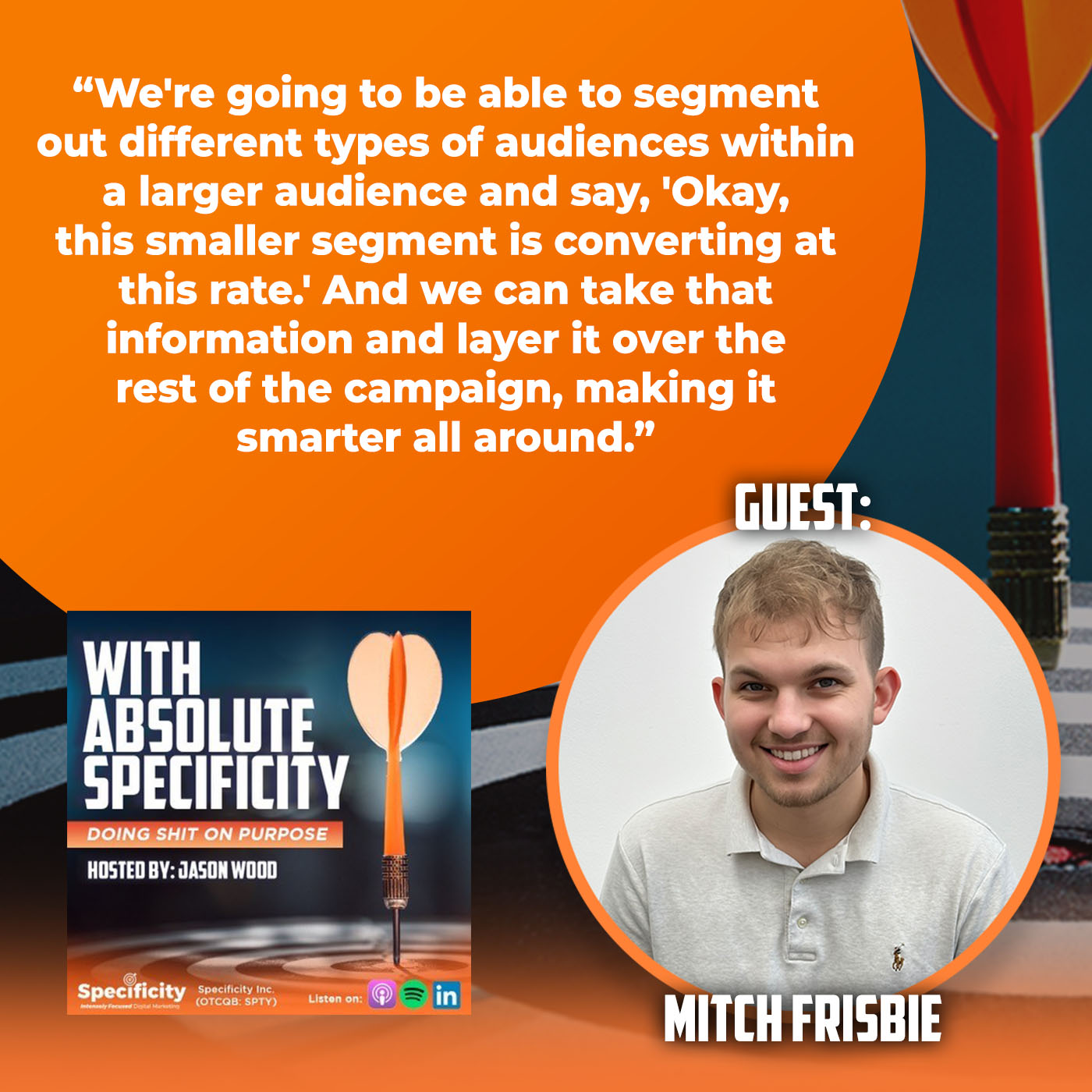
We could shift the budget if we need to with what’s performing best to get the best results for the client.
What we are doing is taking an audience already more narrowly defined and segmenting that audience further. We are looking at things like conversion rates within certain segments. To Brittany’s point, if you have got segments that you know are all converting, they are going to convert at different levels. Depending on the ad spend level, it makes sense a lot of times to move that money to the very highest conversion audience because there’s not enough marketing capital in the campaign to sprint it across and saturate the top tier. That’s usually how clients start with this. It is to have us get at that top-level cream of the crop and then start to socialize it throughout all of the segments.
There is a point of diminishing return, but very often, when clients start, there’s a lot of room to grow where those ROI numbers are incredibly robust up to certain budget amounts. Brittany, talk about that point of diminishing return that we share with clients to make sure that they are not spending money on duplicative ad serving to segments that aren’t going to convert at certain frequencies.
Since we go after such narrow specific audiences for our clients, the audience isn’t infinite there. It reaches a point where this is the entire audience. If we spend any more money on this, we are wasting your spend. We are not going to do that. If you say, “I’d like to spend $20,000 a month but our audience only reaches up to a certain amount,” we are the advocate for your campaign to have that positive ROI. We are not going to go over that top spend amount because there’s no point.
The ROI diminishes. To be clear, that doesn’t mean we are done for you. With our new brand intel product, we can take those secondary and tertiary bands of consumers that will, in the future, arrive in that core audience and start delivering some branding messaging. We do it a little differently because we lower the frequency. We have a specific cadence. It’s a lot less expensive for us to capitalize on a branding audience and be more targeted. We will get into that on the next one. Thanks for jumping on the show with us.
Thanks for having us.
Before you wrap it up, you made a mention of this one piece earlier. It would be very good to touch up on the velocity at which we can get these audiences back to the client. Tell me why that’s important.
It’s important because with opportunity comes timing. If you are timing is off, the opportunity diminishes. That’s the bottom line. For example, Mitch, you bought a house and that’s one of the selects. Every day that you don’t get that audience and get that campaign deployed, you are losing out because your competitors are walking out. They are not as efficient and profitable, but they are hitting some of that audience. You are losing out or consumers are taking them upon themselves to go find the product.
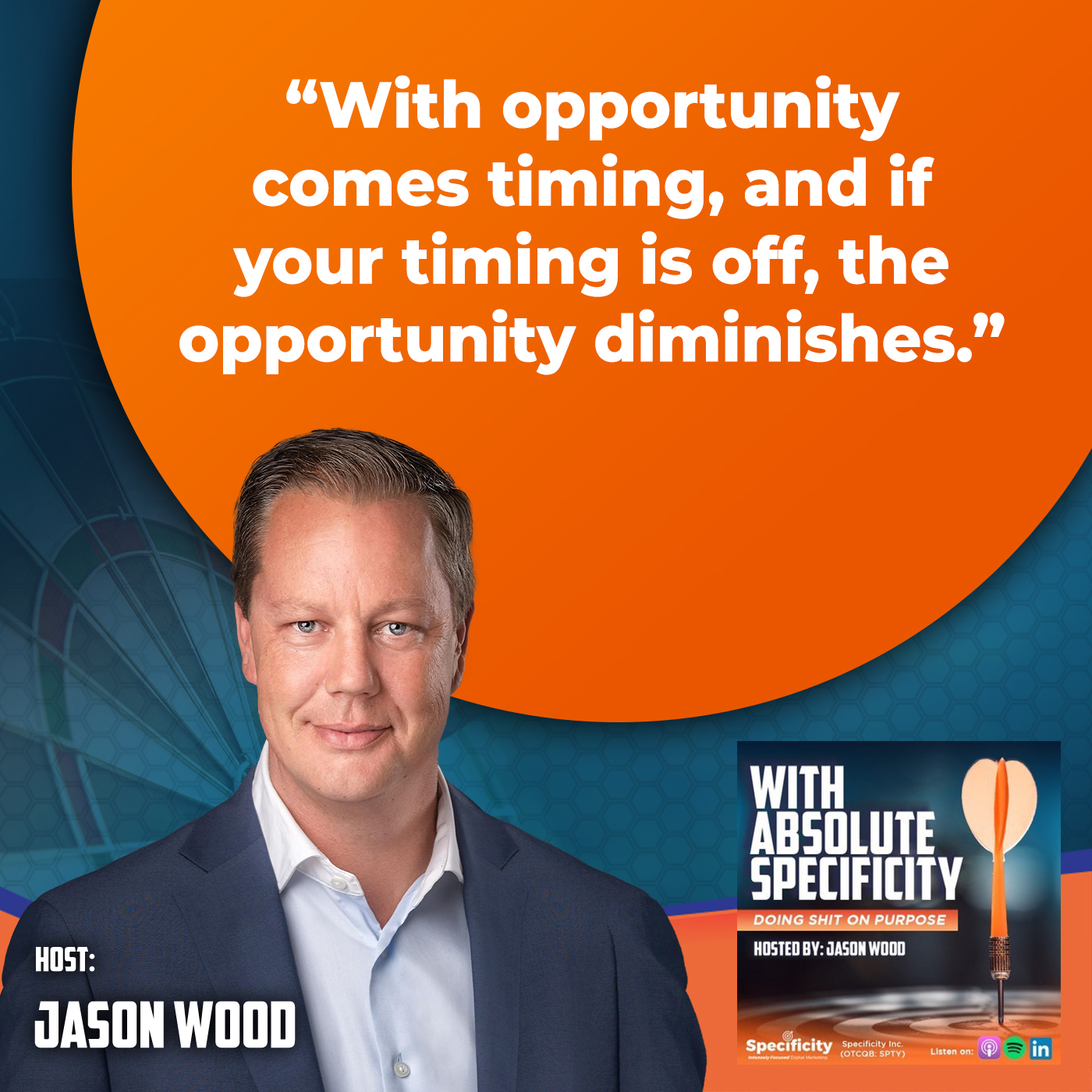
The bottom line is, for us, timing matters because you can do 1 or 2 things with digital spend. You can wait and become part of a search audience. That’s fine. You can be a me-too. You can display your company juxtapose 25 competitors by doing a PPC campaign with Google. You can also do predictive audience build-out outside of the ad tech ecosystem and start selling to people before they pull up Google and start searching. The smarter plate and the higher conversion rate are when you can hit the timing with the right product and drill it to the right audience. That’s where your conversions explode. To your point, Mitch, velocity is not important. It’s mission-critical to correlate ROI.
Thanks a lot. We are going to do this again. I’m going to make this a fixture with our show moving forward. It’s a good idea that we hash this shit out. We will start bringing some other members of the team. We will start talking about our product categories like brand intel and what’s that like for the branding market. We have got the home services and product services. We have got an event blueprint for trade shows and all of that.
It is a very useful and informative exercise to go down into these deep dives for people so they understand we are not selling the same shit on a different day, tweaking it a little differently with a prettier logo. We have got different technology and a different approach. It’s all infused right here in Specificity. Stay tuned for the next one. As always, we hope you have a kick-ass week, everybody. Thanks for joining us.
Important Links
About Brittany Crawford
 Brittany came to Specificity with a wide range of experience in team leadership, from restaurant management to delegating tasks within a corporate pharmaceutical quality-assurance department. She studied Chemical Engineering at The Ohio State University, where she was a member of the Cultural Diversity Committee and Student Ambassador to Australia, Fiji and New Zealand. Brittany feels that her experience there was invaluable, since the lessons she learned translate well to managing a diverse, multi-generational staff like Specificity’s and also translates to her ability to connect with any client to help diagnose their needs to drive their campaign’s success.
Brittany came to Specificity with a wide range of experience in team leadership, from restaurant management to delegating tasks within a corporate pharmaceutical quality-assurance department. She studied Chemical Engineering at The Ohio State University, where she was a member of the Cultural Diversity Committee and Student Ambassador to Australia, Fiji and New Zealand. Brittany feels that her experience there was invaluable, since the lessons she learned translate well to managing a diverse, multi-generational staff like Specificity’s and also translates to her ability to connect with any client to help diagnose their needs to drive their campaign’s success.
About Mitch Frisbie
 Mitch came to Specificity with a diverse array of experience in customer service, sales, tech troubleshooting, as well as real estate investing and management. Mitch excels at leveraging digital platforms to increase brand awareness and drive engagement for a variety of clients. He creates effective campaigns that connect with target audiences and achieve tangible results. Mitch is enthusiastic about leading teams to success and developing innovative digital strategies. Combining his sales, technical management, and analytical background he strives to help drive the company forward.
Mitch came to Specificity with a diverse array of experience in customer service, sales, tech troubleshooting, as well as real estate investing and management. Mitch excels at leveraging digital platforms to increase brand awareness and drive engagement for a variety of clients. He creates effective campaigns that connect with target audiences and achieve tangible results. Mitch is enthusiastic about leading teams to success and developing innovative digital strategies. Combining his sales, technical management, and analytical background he strives to help drive the company forward.
